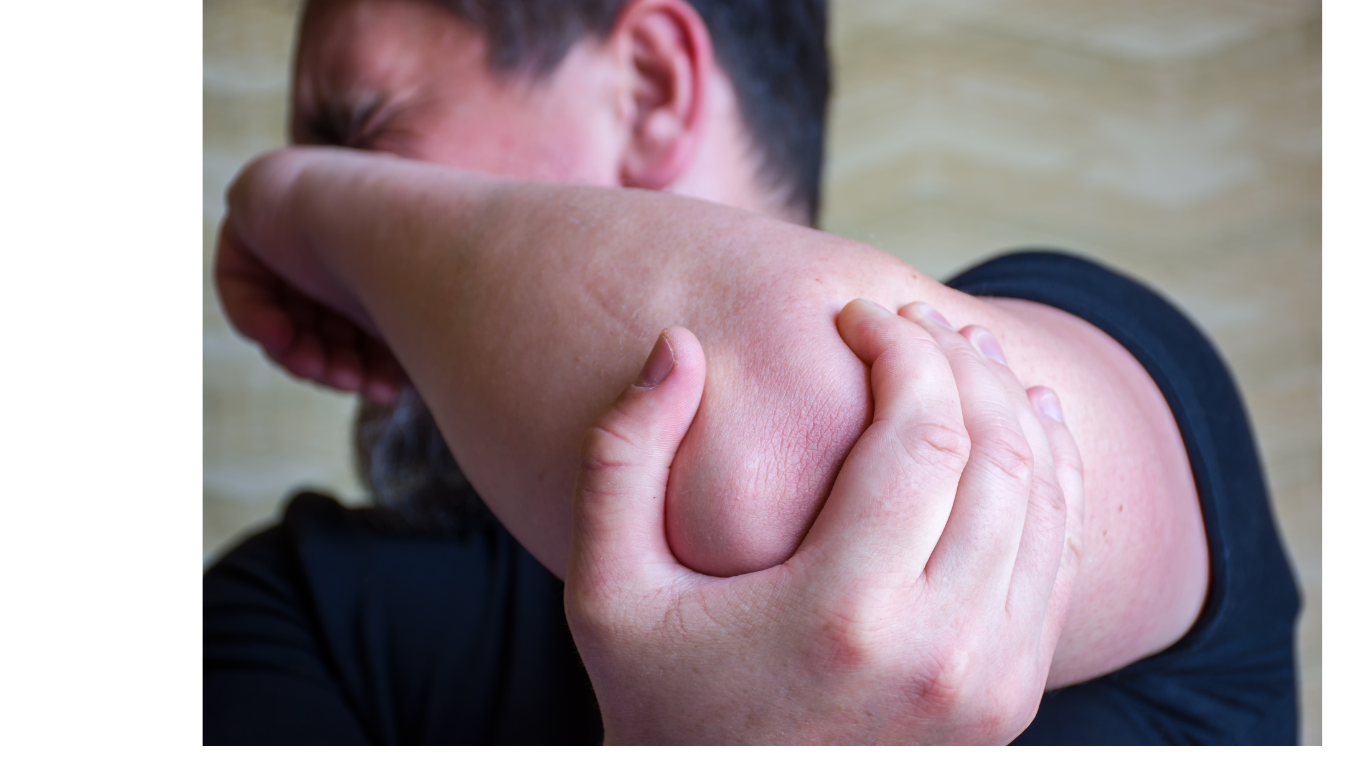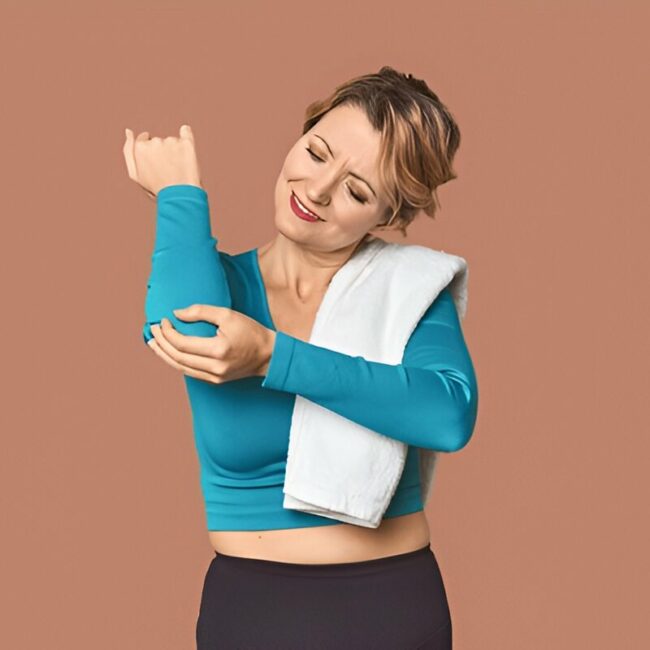
Ulnar Nerve Compression at the Elbow
Ulnar nerve compression at the elbow, also known as cubital tunnel syndrome, is a common condition that affects the ulnar nerve. It runs along the inner side of the elbow. The ulnar nerve controls sensation in the 4th and 5th fingers. It powers many of the small muscles in the hand that are critical for fine motor skills. Patients experience pain, numbness, or weakness when this nerve is compressed. It leads to difficulties with daily activities like gripping objects or typing.
Without timely diagnosis and treatment, this condition leads to long-term damage. It includes muscle weakness and permanent nerve injury. Dr. Marouane Bouloudhnine, Dubai’s leading hand-to-shoulder specialist, offers advanced care for patients suffering from ulnar nerve compression. He provides both medical and surgical treatments to restore function and relieve pain.
What is Ulnar Nerve Compression?

The ulnar nerve passes through three tight tunnels at the elbow. It controls sensation and movement in the 4th and 5th fingers. The nerve’s most common point of compression is at the elbow. When compressed, it leads to loss of sensation and paralysis of the hand’s intrinsic muscles. It also affects finger movements and grip strength.
Causes of Ulnar Nerve Compression
There are several common causes of ulnar nerve compression at the elbow:
Anatomical Compression:
- First Tunnel: Between the medial head of the triceps and the medial intermuscular septum.
- Second Tunnel: Under the epitrochleo-olecranon band.
- Third Tunnel: Under the flexor carpi ulnaris muscle’s aponeurotic arches.

Repetitive Movements & Poor Posture:
- Prolonged elbow bending or resting on hard surfaces.
Previous Injuries:
- Elbow fractures or dislocations causing scarring.
Osteoarthritis & Bone Spurs:
- Bony growths from osteoarthritis narrowing the nerve passage.
Tumors & Cysts:
- Schwannomas or synovial cysts compressing the nerve.
Post-Surgical Complications:
- Scarring or changes after previous elbow surgeries.
Symptoms of Ulnar Nerve Compression

Patients typically experience:
- Irritative symptoms: Tingling, numbness, or “electric shock” sensations in the 4th and 5th fingers, especially when the elbow is bent or during sleep.
- Sensory deficits: Loss of sensation in the palm and back of the hand (4th and 5th fingers).
- Motor deficits: Weak grip, clawing of the fingers, and wasting of intrinsic hand muscles.
Diagnosis of Ulnar Nerve Compression
To diagnose ulnar nerve compression, Dr. Marouane uses a combination of physical exams and advanced imaging techniques:
- Physical Examination: Includes Tinel’s test (tapping the nerve), Froment’s sign, Jeanne’s sign, and Wartenberg’s sign to evaluate hand muscle strength and function.
- Electromyogram (EMG): Performed by a neurologist to confirm compression and assess its severity. However, dynamic cases may show negative EMG results.
- Imaging Tests:
- Elbow X-rays (to identify bone issues).
- Ultrasound (to assess nerve instability).
- MRI (for detecting internal lesions).
Treatment of Ulnar Nerve Compression
A) Non-Surgical treatment
For early-stage cases (McGowan Stage 1), non-surgical treatments are often effective:
- Anti-inflammatory medications to reduce swelling.
- Physical therapy to improve posture and reduce nerve pressure.
- Wearing a night brace to prevent bending of the elbow during sleep.
- Lifestyle changes (e.g., avoiding leaning on the elbow or keeping it flexed for long periods).
Follow-up EMG may be necessary to monitor progress and prevent worsening.
Note that corticosteroid injections are now strictly contraindicated due to the risk of nerve puncture or neurological damage.
B) Surgical Treatment
Surgery is required in advanced cases (McGowan Stage 2 or 3), where motor deficits are present or if medical treatment fails. Ulnar nerve release at the elbow can be performed by an experienced peripheral nerve specialist.

Surgical options include:
- Isolated nerve decompression: This involves releasing the compressed nerve without changing its position.
- Anterior nerve transposition: If the ulnar nerve is unstable or at risk of further compression, it may be moved to a new position in front of the medial epicondyle, providing a safer pathway. This transposition may involve the use of a fat flap, creating a vascularized environment rich in growth factors to aid in recovery.
The surgery is performed under regional anesthesia, ensuring minimal discomfort, and followed by a tailored rehabilitation plan to restore muscle strength and hand function.
Importance of Early Diagnosis and Treatment
If left untreated, ulnar nerve compression can lead to permanent muscle weakness, finger deformity, and chronic pain. Early diagnosis and treatment are essential to prevent long-term complications and ensure a quicker recovery. Dr. Marouane Bouloudhnine, Dubai’s leading hand-to-shoulder specialist, emphasizes the importance of early intervention for the best possible outcome.
FAQs About Ulnar Nerve Compression
- What causes ulnar nerve compression?
Repetitive elbow movements, poor posture, or previous elbow injuries lead to compression. - Can this condition improve without surgery?
In mild cases, symptoms improve with rest and therapy, but severe cases usually require surgery. - How long is recovery after surgery?
Most patients experience relief within a few weeks, with full recovery taking 6-8 weeks depending on the severity. - What happens if ulnar nerve compression is left untreated?
It can lead to chronic pain, muscle weakness, finger deformity, and permanent loss of function.
Conclusion
Ulnar nerve compression at the elbow can severely impact hand function, making daily tasks difficult. Seeking expert care from Dr. Marouane Bouloudhnine, Dubai’s top hand-to-shoulder orthopedic specialist, ensures early diagnosis and treatment. With his patient-centered approach and advanced surgical techniques, patients can achieve full recovery and return to normal activities sooner.
Suffering from elbow or hand pain? Don’t wait for the symptoms to worsen. Consult Dr. Marouane, Dubai’s leading hand-to-shoulder orthopedic specialist, for expert care and get back to living pain-free!






